Scale factor: Meet the artists exhibiting at Art Basel Unlimited
Simply sign up to the Life & Arts myFT Digest -- delivered directly to your inbox.
Carol Bove
“Egg” is the New York-based artist’s largest single sculptural work so far. It was created using materials from scrap metal yards in New Jersey (with David Zwirner gallery).
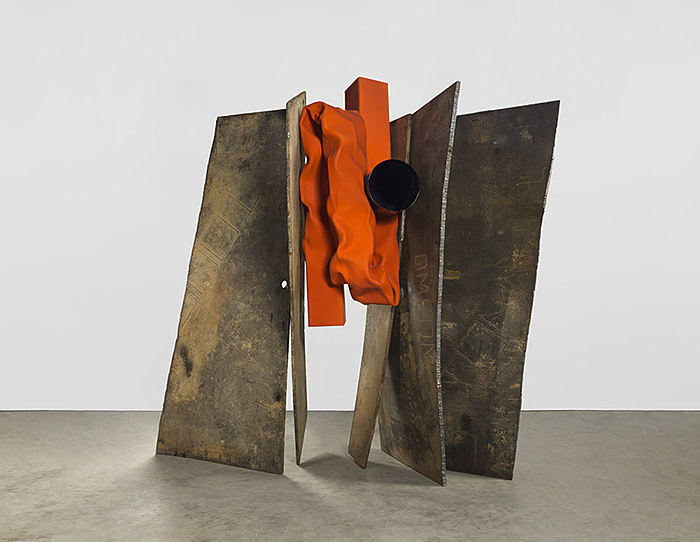
Has scouting for the materials for this work been an illuminating experience?
Yes, I looked in shipyards and scrap metal yards. The scale of these places is hard to comprehend. Sometimes I identify a good piece of scrap metal and ask the crane operator to put it on my truck, and while it hangs in the air over the mountain of steel, I feel disappointed by its smallness. Then he lowers it into my truck and almost tips me over and my respect for it instantly changes. Scale is always relational and unfixed.
When I buy it, the cost is calculated from that day’s price, underscoring its commodity status. Working in scrap steel I am gaining a feeling for the movement through the world economy. The scrap places near my studio in Brooklyn are all selling by the barge load — from what I can tell, all scrap steel goes to China — and most won’t have anything to do with me. The scale I buy on is just not worth their while, even though I buy by the ton, so I go to New Jersey where somehow everything is possible.
The types of things being scrapped and melted down tell a story. A lot of infrastructure from throughout the 20th century is being thrown away, bridges and buildings stamped “Made in America”.
What about the shipyards?
The shipyards are on an entirely different order of scale. I went to New Orleans to search for bigger material and the yard stretched for over a mile. There was an entire city’s worth of ruined cars from a recent flood flattened and stacked in rows. But in the end, none of the shipyard steel was bigger in the way I imagined. What I really wanted was something thicker — so the found steel on the Unlimited sculpture is a construction material used to mend roads.
Does the piece reflect new aspects of your practice?
Mostly it’s the same type of work I’ve been doing, but bigger. For the last few years, I’ve been working in steel only, collaging steel elements that have been processed in three ways. First, the found steel like the material I’ve just described; second, steel square tube stock I buy as an off-the-shelf item and manipulate in the studio using a 50-ton press and hoists; and finally, fabricated elements which are always black, high-gloss, mirror-finish discs.
For the Unlimited piece, I custom-built a 100-ton press to manipulate the larger tube stock. As I developed the work, I worked in parallel on a smaller scale, practising all of the types of moves I could make on the six-inch steel tube before committing to the 12-inch tube of the Unlimited piece. I will be showing all of these smaller works in London at David Zwirner (June 8-August 4) at the same time as Unlimited.
Jon Rafman
The Canadian artist is showing his video installation “Dream Journal 2016-2017”, featuring two female protagonists as they navigate a dystopian landscape (Sprüth Magers gallery).
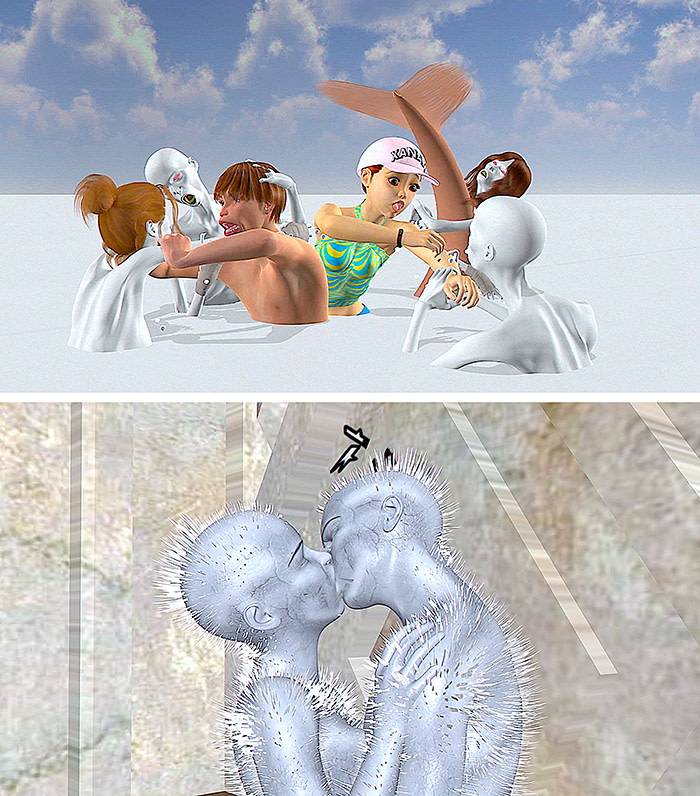
Will visitors be taken aback by ‘Dream Journal’?
The video installation is a reflection of my dreaming mind — a mind inundated with fragments of meaningless information and internet imagery. Some viewers will be fully immersed and perhaps overwhelmed by the onslaught of absurdist situations. The video offers a Boschian vision of reality that simultaneously expresses the abject and beautiful, the horrific and erotic. It is the product of a world where there is no coherence and no way to organise what is being presented. On one level, it is a cautionary tale of what it is like to burn alive in a hyper-accelerated technology-obsessed culture.
Is an art fair the best place to view a video installation?
One has to voyage through the underworld to reach the eternal garden. Unlimited is also different from your typical art fair context; it feels like a large exhibition.
Is there a narrative structure to ‘Dream Journal’?
It is an ongoing series with a free meandering narrative. The video follows the structure of a quest. But unlike traditional quests, there is no Ithaca [the island home of Homer’s Odysseus] to return to. The protagonist exists in an unstable dimensional rift, without being rooted in history or space. The project emerged from a profound sense of loss, a deep urge to belong somewhere that no longer exists, or what Georg Lukács called “transcendental homelessness”.
Lara Favaretto
The Treviso-born artist’s new work “Birdman or (The Unexpected Virtue of Ignorance)” consists of 400kg of compressed confetti shaped into cuboid sculptures (Galleria Franco Noero).
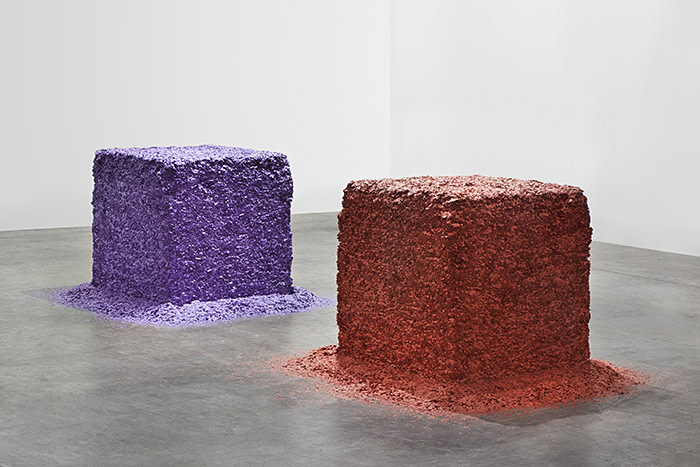
Is the size of your monumental new work a departure for you?
It is certainly the largest group I have conceived for this kind of work. In the past, I have shown smaller groups of confetti cubes, for instance in a solo exhibition at Tramway in Glasgow in 2009, and at the Carnegie International in 2013.
But the monumentality of this work is made fragile and vulnerable by the nature of the material. The cubes gradually surrender to collapse over time, losing their minimalist geometric shape. They recover their initial shape only when they are compressed again, starting out from scratch.
How much of a challenge was it to compress 400kg of confetti?
The mass of paper confetti is compressed inside a wooden case by human force alone. I am never certain that the first attempt will be the best; a degree of uncertainty is always there, with this kind of work. Its solidity is constantly undermined by an inevitable yet unpredictable crumbling away over time.
How significant is Unlimited at Art Basel as a platform?
The concentration of forces and artists presenting monumental works at the same time and in such a short period makes Unlimited unique.
Sam Gilliam
At David Kordansky Gallery, the 84-year-old US artist presents “Untitled” (2018), a room of suspended painted fabric.
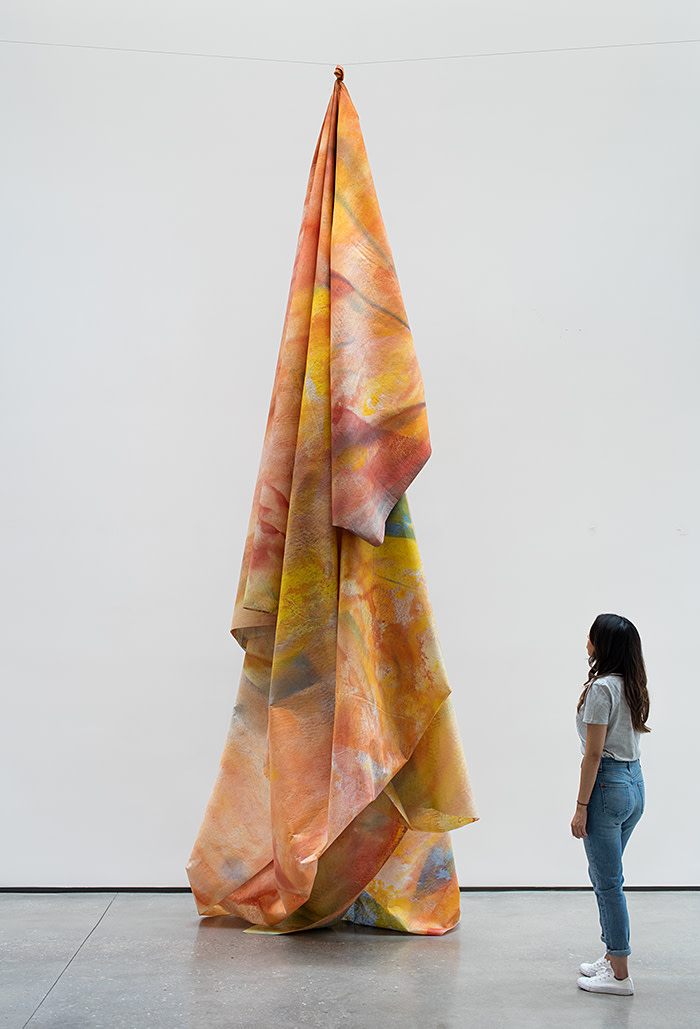
Is showing at Unlimited important at this point in your career?
Unlimited is a fun moment for me to show something new, a complement to my concurrent historic survey at the Kunstmuseum. It’s always exciting to install a major work for the very first time, seeing how the forms and colour shape the space and, in turn, seeing how viewers — crowds in this case — navigate the work.
Is this work one of your typical drape paintings?
“Untitled” is typical of room-size installations I made as far back as the early 1970s, into the 1980s, in which painted colour becomes dynamic sculptural form — architecture and experience. We’ll hang over 20 lengths of acrylic-stained nylon in a labyrinth-like construction. I have a few tricks up my sleeve, too — but you’ll have to wait to see them at the fair.
With another show opening at the Kunstmuseum Basel, does this moment feel like a career renaissance?
It feels like a career, period. I’ve been working steadily all these years. The spotlight is welcome, and I appreciate the opportunity to show my work at the Kunstmuseum, which has an excellent collection of minimalist work by Donald Judd and Carl Andre.
Have younger artists acknowledged your innovations?
Yes, implicitly; and recently more explicitly, too. There’s a show on right now at the Wexner Center for the Arts in Ohio (to August 12) with two of my Drapes hung with paintings by younger artists.
Follow @FTLifeArts on Twitter to find out about our latest stories first. Subscribe to FT Life on YouTube for the latest FT Weekend videos
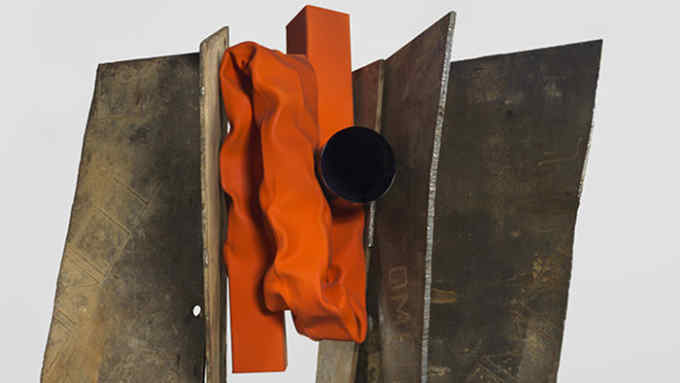
Comments